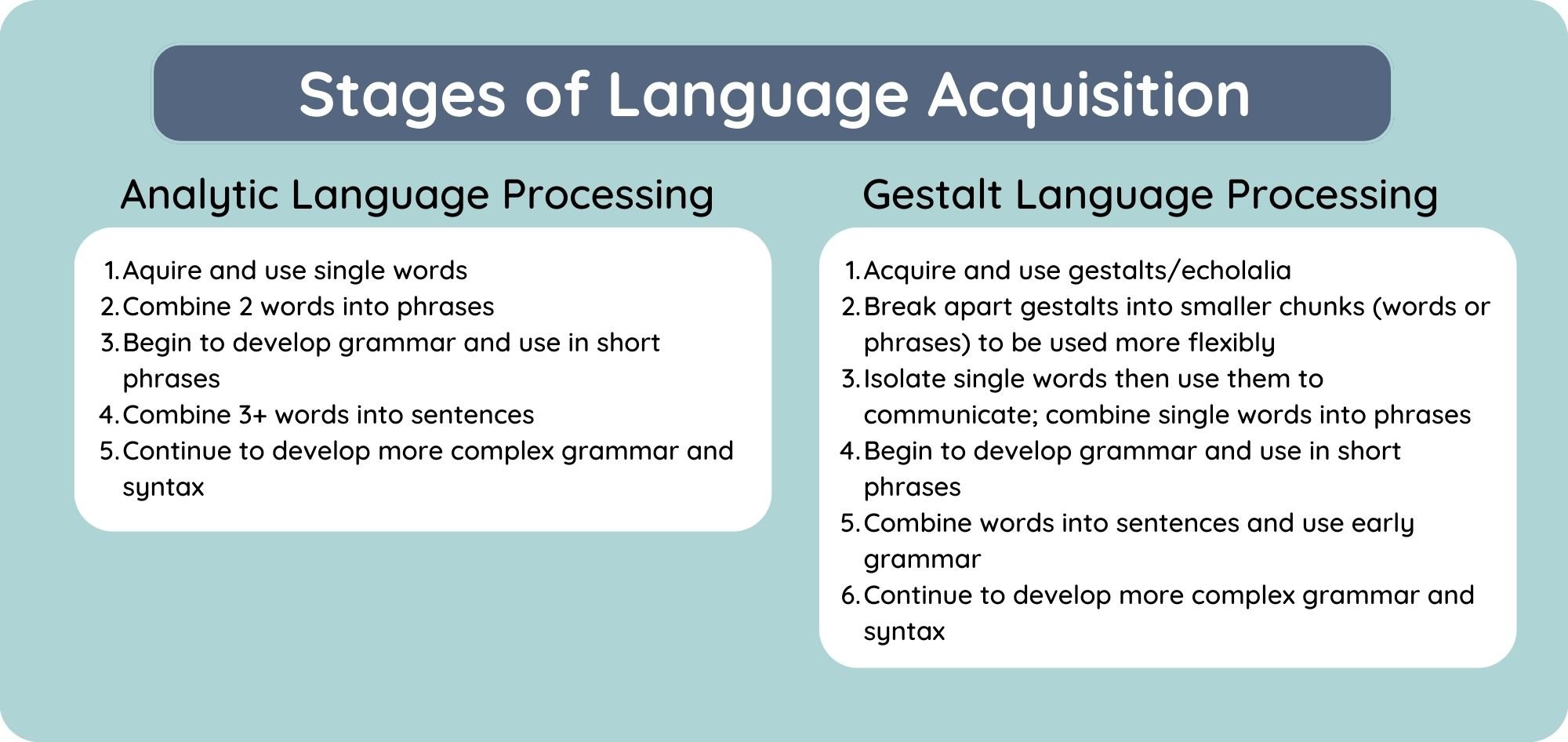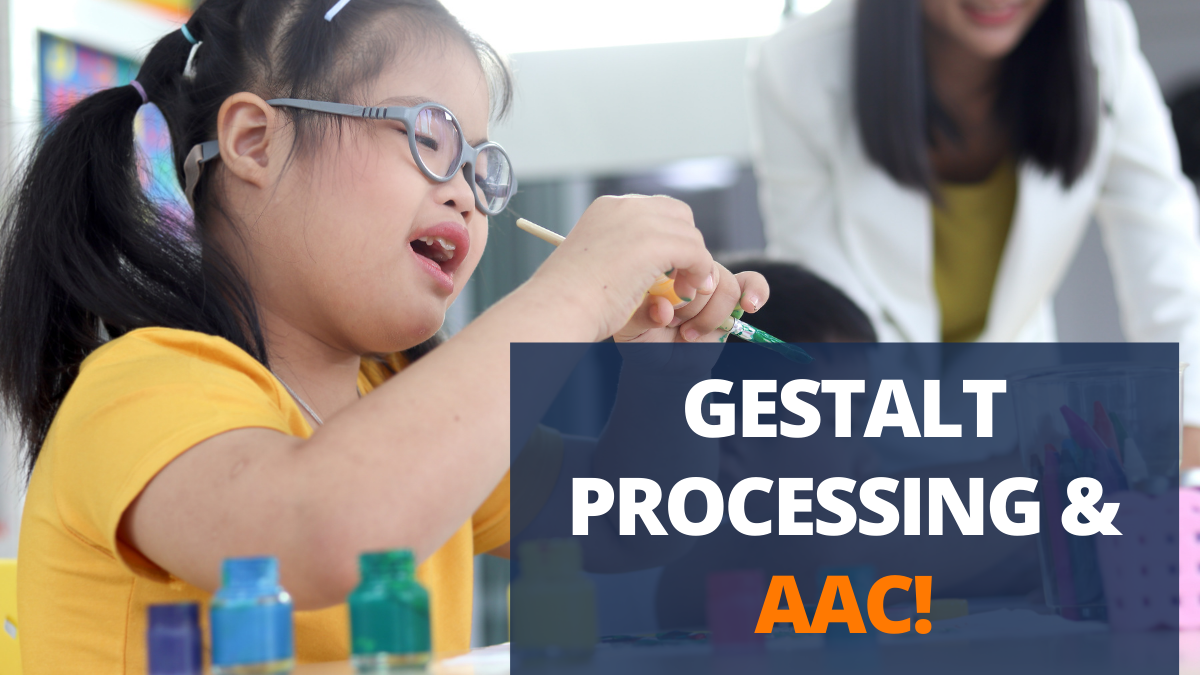Gestalt language processing, a groundbreaking approach in natural language processing, unveils a captivating perspective on language comprehension. By integrating principles from gestalt psychology, this innovative field unravels the intricate ways in which we perceive and interpret linguistic patterns, opening up a realm of possibilities for advanced NLP applications.
Delving into the foundations of gestalt language processing, we uncover its core principles and explore how they manifest in language processing tasks. We examine the profound role of gestalt perception in shaping our understanding of language, shedding light on the cognitive mechanisms that govern our interpretation of linguistic patterns.
Gestalt Language Processing

Gestalt language processing is a cognitive approach to language processing that emphasizes the importance of wholes and patterns in language comprehension. It is based on the Gestalt principles of perception, which state that the whole is greater than the sum of its parts and that the mind tends to organize sensory information into meaningful wholes.
In language processing, the Gestalt approach emphasizes the importance of context and the relationships between words and phrases. It suggests that we do not process language in a linear, word-by-word fashion, but rather in a holistic manner, taking into account the overall structure and meaning of the text.
Principles of Gestalt Language Processing
- The whole is greater than the sum of its parts.This principle suggests that the meaning of a word or phrase is not simply the sum of the meanings of its individual parts, but rather is determined by the context in which it is used.
- The mind tends to organize sensory information into meaningful wholes.This principle suggests that we do not process language in a linear, word-by-word fashion, but rather in a holistic manner, taking into account the overall structure and meaning of the text.
- The mind tends to fill in missing information.This principle suggests that we are able to understand incomplete or ambiguous language because we can fill in the missing information based on our knowledge of the world and our expectations.
Examples of Gestalt Principles in Language Processing
- The word “run” can have different meanings depending on the context in which it is used.For example, it can mean “to move quickly on foot” or “to operate a machine.” We are able to determine the correct meaning of the word based on the context of the sentence.
- We can understand incomplete or ambiguous sentences because we can fill in the missing information based on our knowledge of the world and our expectations.For example, we can understand the sentence “The boy is running” even though we do not know where he is running or why.
- We tend to group words and phrases into meaningful units.For example, we group the words “the boy” together as a noun phrase and the words “is running” together as a verb phrase.
Gestalt Perception and Language Comprehension
Gestalt psychology emphasizes the role of perceptual organization in shaping our experience of the world. This approach has been applied to language comprehension, suggesting that we perceive and interpret linguistic patterns based on principles of perceptual organization.
Gestalt principles, such as proximity, similarity, and closure, influence the way we perceive and interpret linguistic patterns. For instance, we tend to group words that are close together, similar in sound or meaning, or form a complete pattern.
Proximity, Gestalt language processing
The proximity principle states that elements that are close together in space or time tend to be perceived as a group. In language comprehension, this principle suggests that we tend to group words that are adjacent to each other in a sentence or paragraph.
- Example: “The cat sat on the mat.” We perceive “the cat” and “on the mat” as two distinct phrases based on their proximity.
Similarity
The similarity principle states that elements that are similar in appearance, sound, or meaning tend to be perceived as a group. In language comprehension, this principle suggests that we tend to group words that have similar sounds or meanings.
- Example: “The big, black dog barked loudly.” We perceive “big” and “black” as a group based on their similarity in meaning.
Closure
The closure principle states that we tend to perceive incomplete figures or patterns as complete. In language comprehension, this principle suggests that we tend to fill in missing information or complete incomplete sentences.
- Example: “The boy was so excited that he could not wait to…” We perceive this sentence as complete even though the ending is missing, based on the closure principle.
Applications of Gestalt Language Processing
Gestalt language processing has gained prominence in natural language processing (NLP) due to its ability to capture the holistic nature of language and context. It offers unique advantages in various NLP tasks, including:
Text Summarization
Gestalt techniques enable the extraction of key concepts and relationships from text, facilitating the generation of concise and coherent summaries. By identifying patterns and chunks of information, gestalt-based summarization algorithms can capture the essence of a text while preserving its overall structure and meaning.
Machine Translation
In machine translation, gestalt language processing helps bridge the gap between different languages by recognizing semantic and syntactic patterns. It enables the identification of corresponding phrases and clauses, ensuring accurate and fluent translations. Gestalt techniques can also handle ambiguous or context-dependent words and phrases, leading to more natural-sounding translations.
Information Retrieval
Gestalt language processing enhances information retrieval systems by providing a deeper understanding of user queries and document content. By analyzing the context and relationships within queries and documents, gestalt techniques can improve relevance ranking, identify relevant passages, and facilitate the extraction of specific information.
Challenges and Future Directions in Gestalt Language Processing

Gestalt language processing, despite its potential, faces certain limitations and challenges that hinder its widespread adoption and further development. These limitations and potential future directions for research and development in the field are explored below:
Challenges in Gestalt Language Processing
- Limited Applicability:Gestalt principles are primarily based on visual perception, and their direct application to language processing can be limited. Language is a complex and multifaceted phenomenon that involves various levels of abstraction, making it challenging to apply gestalt principles consistently across all linguistic levels.
- Computational Complexity:Gestalt language processing algorithms can be computationally expensive, especially for large datasets. The need to consider multiple factors and relationships among linguistic units can lead to high computational costs, limiting the scalability of these algorithms for real-world applications.
- Lack of Robustness:Gestalt language processing systems often lack robustness in handling noisy or incomplete data. Real-world language data is often noisy, ambiguous, and incomplete, which can pose challenges for gestalt language processing algorithms to perform effectively.
Future Directions in Gestalt Language Processing
Despite these challenges, gestalt language processing holds promise for future research and development. Potential directions for future work include:
- Hybrid Approaches:Integrating gestalt principles with other language processing techniques, such as statistical or machine learning methods, can enhance the robustness and applicability of gestalt language processing systems.
- Contextual Analysis:Exploring the role of context in gestalt language processing can lead to more sophisticated algorithms that can handle the complexity and variability of real-world language data.
- Cross-Modal Analysis:Investigating the relationship between visual and linguistic gestalts can provide insights into the cognitive processes underlying language comprehension and production.
Examples of Gestalt Language Processing in Practice

Gestalt language processing techniques are increasingly being used in NLP applications. These techniques allow NLP systems to process language in a more holistic and context-aware manner, leading to improved performance on a variety of tasks.
NLP Applications Utilizing Gestalt Principles
The following table provides specific examples of NLP applications that utilize gestalt language processing techniques:
| Application Name | Task | Gestalt Principles Used |
|---|---|---|
| Text Summarization | Summarizing text by identifying key concepts and relationships | Proximity, Similarity, Closure |
| Machine Translation | Translating text from one language to another | Proximity, Similarity, Good Continuation |
| Sentiment Analysis | Determining the sentiment of text (positive, negative, or neutral) | Proximity, Similarity, Figure-Ground |
| Question Answering | Answering questions based on a given text | Proximity, Similarity, Closure |
| Named Entity Recognition | Identifying named entities (e.g., people, places, organizations) in text | Proximity, Similarity, Good Continuation |
Final Conclusion

In conclusion, gestalt language processing emerges as a transformative force in natural language processing, offering a comprehensive framework for understanding language. Its applications span a wide spectrum of NLP tasks, from text summarization to machine translation, revolutionizing the way we interact with and comprehend language.
As we venture into the future, the potential of gestalt language processing remains boundless, promising continued advancements in the field of natural language understanding.
FAQ: Gestalt Language Processing
What is gestalt language processing?
Gestalt language processing is an approach to natural language processing that draws inspiration from the principles of gestalt psychology. It emphasizes the importance of perceiving language as a whole, rather than as a collection of individual elements.
How does gestalt language processing differ from traditional NLP approaches?
Traditional NLP approaches often focus on breaking down language into smaller units, such as words or phrases. Gestalt language processing, on the other hand, emphasizes the importance of considering the overall structure and context of language.
What are some of the applications of gestalt language processing?
Gestalt language processing has a wide range of applications in NLP, including text summarization, machine translation, and information retrieval.